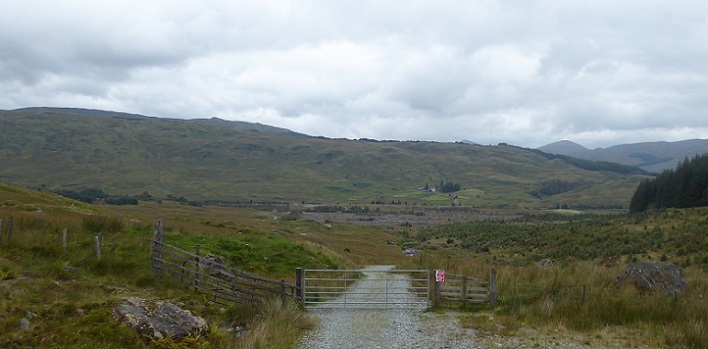
Walking back down the road in upper Glen Falloch in September the difference in vegetation between the east and west banks of the River Falloch was striking. On the right of the photo you can see lots of natural regeneration, whereas on the left there is none. The Roy Map 1747-52 (see here) shows the Glen Falloch pine wood, the most southerly remnant of the Caledonian Pine Forest in Scotland, extending almost to the gate in the photo.
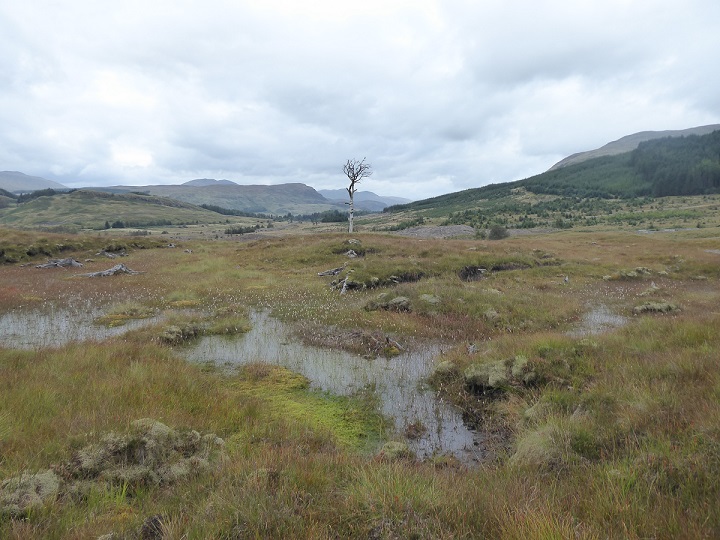
The Glen Falloch pine wood is unusual in that pollen analysis shows it became established c 4300 years ago when the Caledonian Pine forest elsewhere had started to retreat, a change that is often attributed to a warmer wetter climate. Glen Falloch challenges that explanation. While parts of the ground are now so wet and acidic that it would be very difficult to grow, it appears that overgrazing and felling prevented the woodland from regenerating. Then, as the older trees died, that allowed the plants which help to form bogs to become established. By the time the first actions were taken to protect the Glen Falloch pine wood in 1982, when one hectare was fenced, it was a tiny remnant of what it had once been.
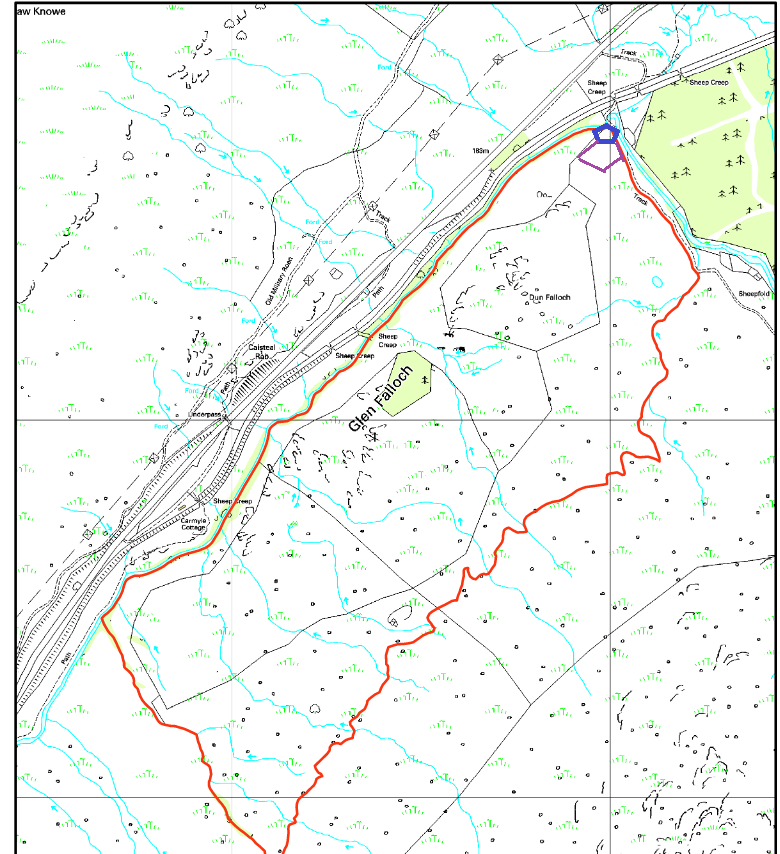
The pine wood was not designated a Site of Special Scientific Interest until March 1990, three years after the oak woods lower down in Glen Falloch. The 1982 exclosure had by then shown “remarked growth of both naturally seeded and planted Glen Falloch pines and broadleaves and recovery of the ground flora”. In 1993, “co-operation between SNH [Scottish Natural Heritage}, the estate, grazing tenant, and Forest Authority resulted in the construction of two larger exclosures comprising 7.5 and 40 ha” linked by stock fence “to allow for seasonal deer and sheep movements” (all quotes Our Pinewood Heritage 1994). These enclosures were then planted with pine and a range of broadleafed species funded under the Woodland Grant Scheme (ie by us, the public).
Having walked past many times, it was the smaller of those two exclosures I visited.
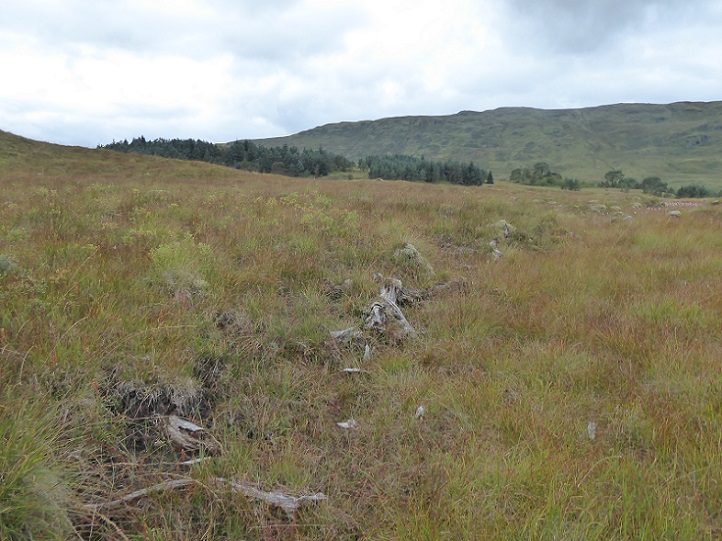
The description in SNH’s site management statement (see here) of the ground in the SSSI outside the exclosure as being dominated by purple moor grass and bog myrtle appeared about right.
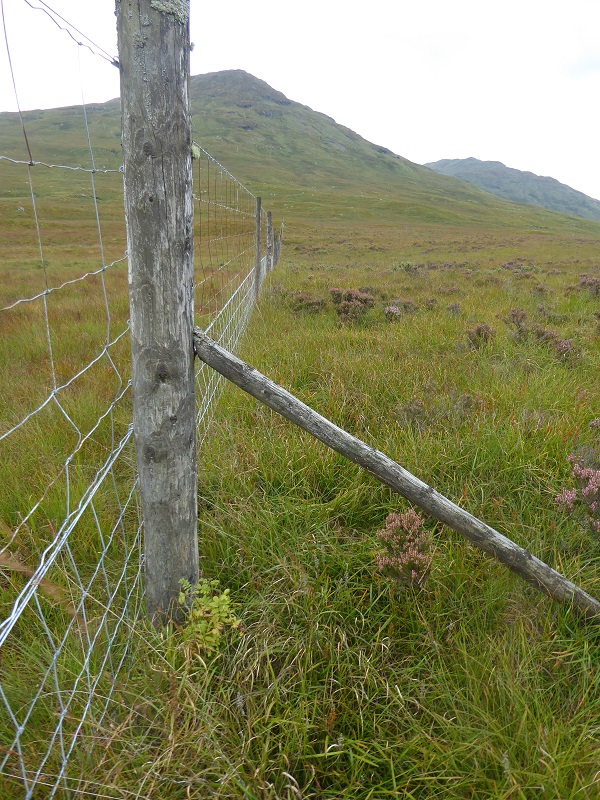
There was no sign of heather or regenerating trees until I got to the fence. The position of the rowan, under a post where birds shit and inside the fence, is no accident. The vegetation on the ground shows that one of the main provisions in the SSSI Site Management Statement “Ensure high deer numbers are not causing over-grazing in unenclosed parts of the site” is not being kept. It appears as overgrazed as ever.

Inside the exclosure progress was difficult, with large tufts of purple moor grass and impenetrable stands of bog myrtle. I stumbled rather than walked. It soon became apparent that the rank vegetation, a consequence of the reduction in grazing pressure, was having serious consequences for the ability of the pinewood to regenerate.
Pine seeds usually require areas of bare ground to germinate and root and there appeared to have been almost no natural regeneration since the planting. Bare patches which would allow the pine to regenerate may perhaps develop in future as the heather (on the right of the photo) ages and dies.
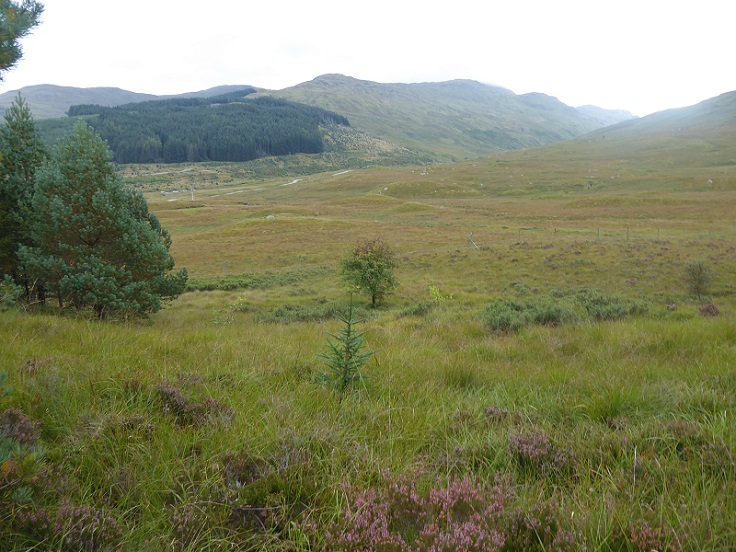
While more natural regeneration of trees was taking place within the exclosure than without, it was very limited. And sitka, an invasive non-native species, appeared to be having more success than pine, despite the nearest seed source being over half a kilometre away.
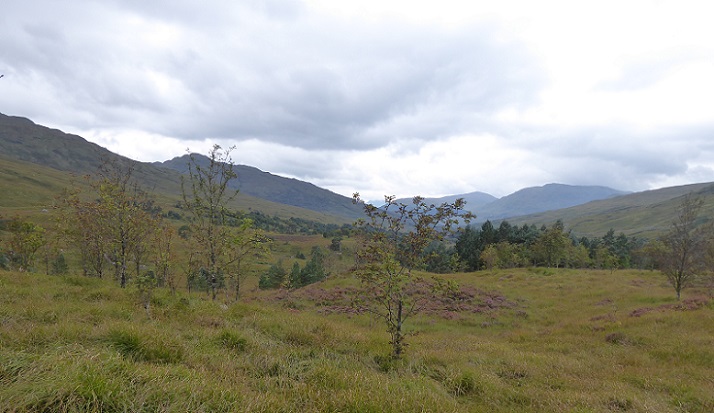
Stands of rowan had been planted up on Dun Falloch and this was also the tree whose seed appeared to have had most success penetrating the thick vegetation and regenerating naturally.
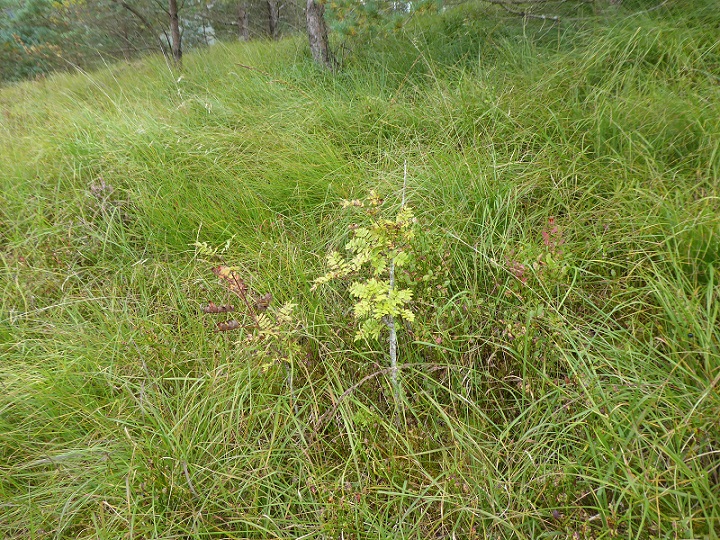 Almost all the rowan saplings, however, were browsed. The challenge is to explain the browsed trees among rank and what appears to be ungrazed vegetation. One possibility is that deer mainly seek refuge and find a way through the fence in winter and eat the trees when nothing else protrudes above the snow.
Almost all the rowan saplings, however, were browsed. The challenge is to explain the browsed trees among rank and what appears to be ungrazed vegetation. One possibility is that deer mainly seek refuge and find a way through the fence in winter and eat the trees when nothing else protrudes above the snow.
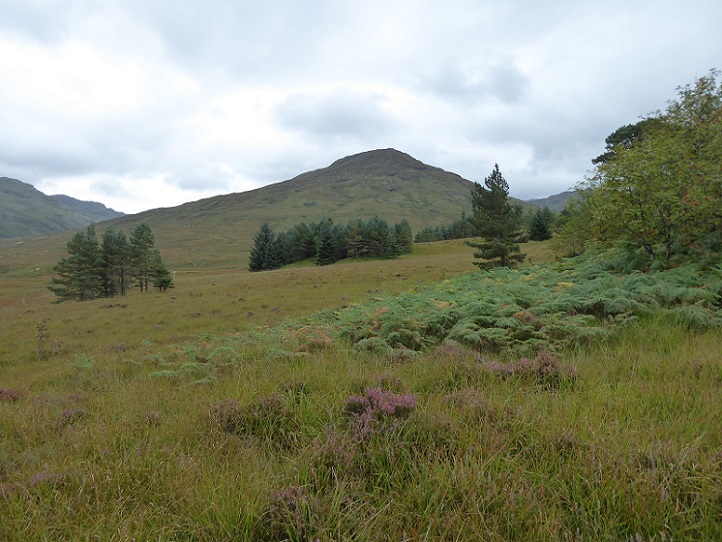
Whatever the explanation, the attempt to restore the Glen Falloch pinewood generally appears to be failing. A combination of rank vegetation and occasional browsing appears to be preventing any further regeneration leaving isolated stands of even aged planted trees.
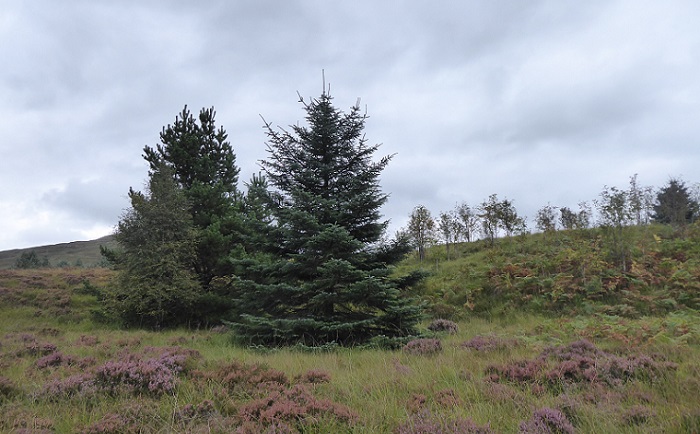
The regeneration plan appears to have failed almost from the start with self-seeding sitka becoming established not long after the pine was planted. According to SNH’s Site Management Statement for the SSSI on sitelink (see here), dating from 2008, “non native Sitka spruce, if identified, should be removed from the site.”
Despite the sitka, the Site Management Management statement classified the pinewood as “unfavourable recovering“, rather than being in “unfavourable” condition. This was re-affirmed in 2014, as a result of a review by SNH for which no paperwork is publicly available. Now, under NatureScot’s new simplified system for reporting on the condition of sites, Glen Falloch pinewood has been classed as being in favourable condition. It is a lie. One wonders whether any member of staff from SNH/NatureScot has even been allowed to visit the site in the last ten years?
The presence of maturing sitka in the exclosures is storing up problems for the pine wood. Sitka generally start to seed profusely when around 20 years old so unless they are removed soon Glen Falloch may convert to a non-native spruce wood!
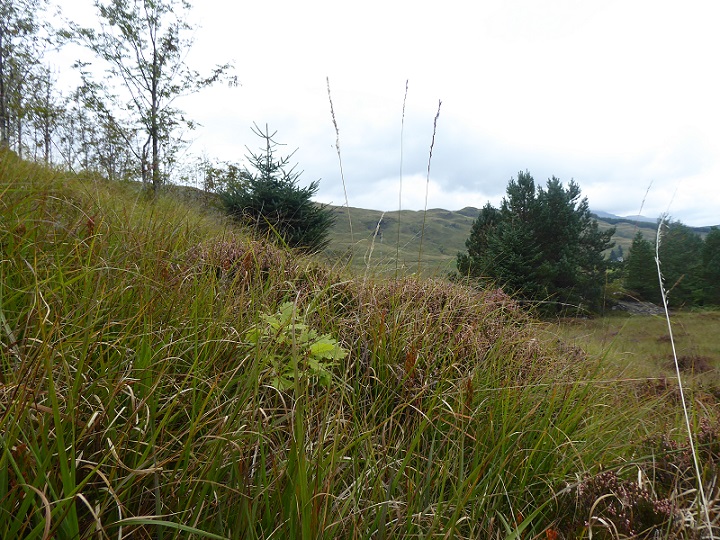
Among the scattered sitka, however, there was a sign of hope for our native species. For some time I have been wondering about the name Derry Daroch, “grove of the oak trees”, on the western edge of the SSSI. A place named after oak but adjacent to pine. In Europe there are mixed pine/oak forests, a type of woodland not now found in Scotland. The potential for such a wood, a mix of east and west, in Glen Falloch is exciting.
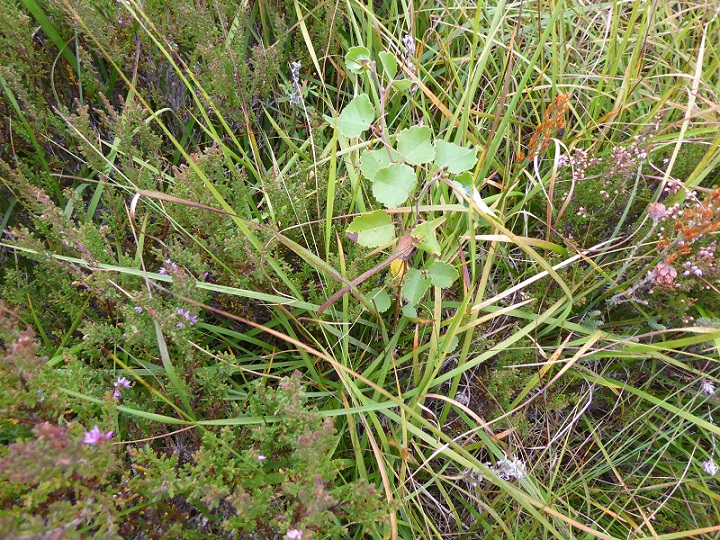
I also found an aspen sapling. This species was apparently planted on site – there are some lower down the glen on the West Highland Way – but this one appears to spread on a runner or have seeded naturally. Being nutritious and tasty it is usually the first species of tree to be browsed.
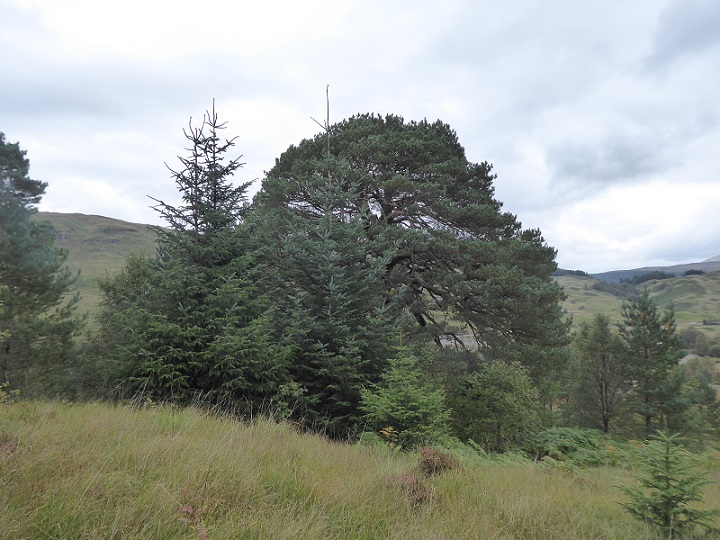
The most intensive natural regeneration I saw was taking place around the surviving old pines, estimated to be 170-400 years old, near the eastern edge of enclosure. Sadly this involved more sitka than pine.
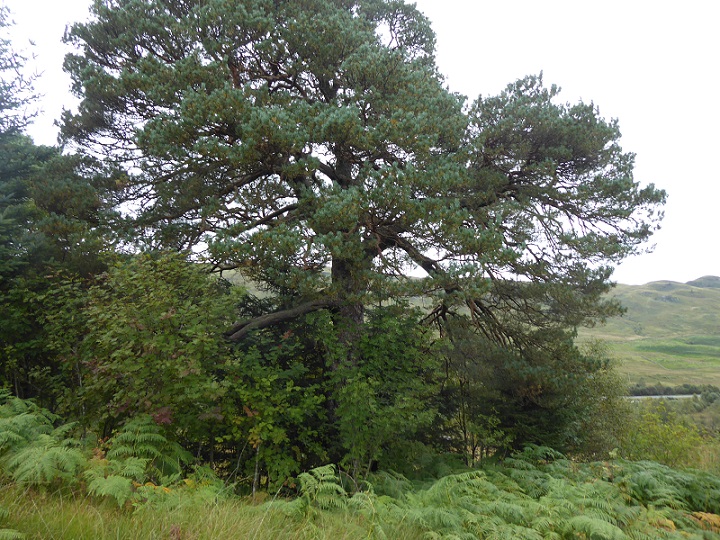
But there was also a fair amount of birch and rowan which had managed to get away through patches of bracken (the site management statement talks about the need to control bracken). It looked to me as if the old pines had influenced the surrounding vegetation, for example through shading ground and taking up water, and this had helped create conditions favouring natural regeneration. If this is right, it is possible that as the isolated stands of pine planted elsewhere on the site grow, the ground round them may become more suitable for trees to seed naturally.
The Glen Falloch Pinewood and the Upper Glen Falloch hydro scheme
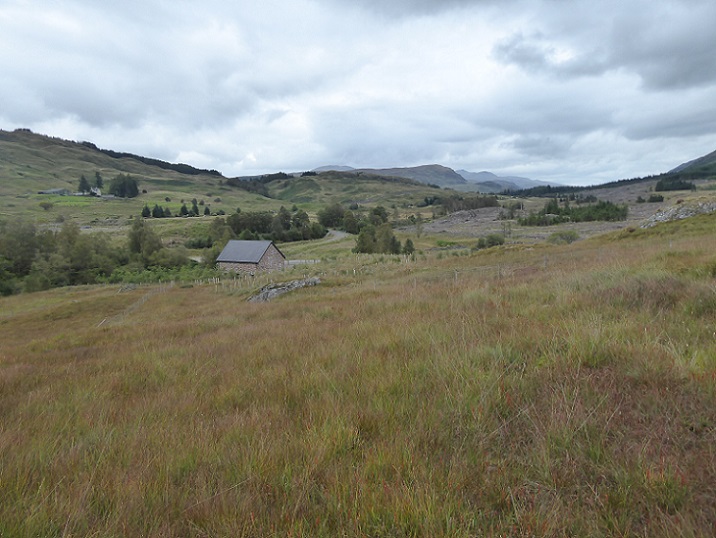
The distance between the edge of the eastern pine wood exclosure and the enclosure around the Upper Glen Falloch hydro scheme powerhouse is about 100m, an unfenced gap with no trees. The powerhouse, the woodland planting around it and a section of the pipeline beyond are all on land that forms part of the SSSI.
The planning application for the hydro scheme, which was first considered in 2008 at the very time the pine wood was first classified as “unfavourable recovering”, was a missed opportunity by the Loch Lomond and Trossachs National Park Authority (LLTNPA).
According to the Environmental Statement at the time: “The pipeline runs inside the north-eastern boundary of the SSSI, though through a strip of largely open ground and should not impact on the main feature of this site.” There was no mention of the fact that the mineral soils that would be excavated as a result of the pipeline construction would be conducive to pines seeding or that this created the possibility of reviewing how the area of the SSSI outside the exclosures was being managed.
Instead, the LLTNPA’s approach was to require the powerhouse to be screened by planted trees:
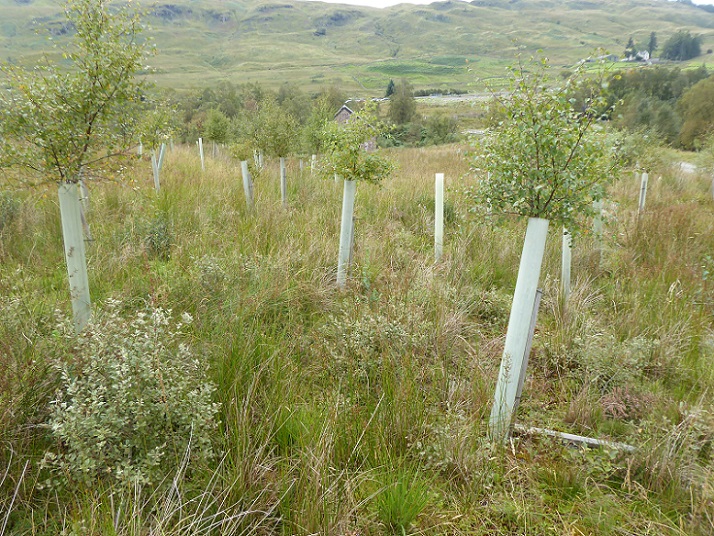
Why the use of plastic tree shelters was judged appropriate for what was once part of the Caledonian Pine Forest is unclear. But between the leaning and empty tubes there is plenty of natural regeneration on the recently exposed mineral soils.
Discussion
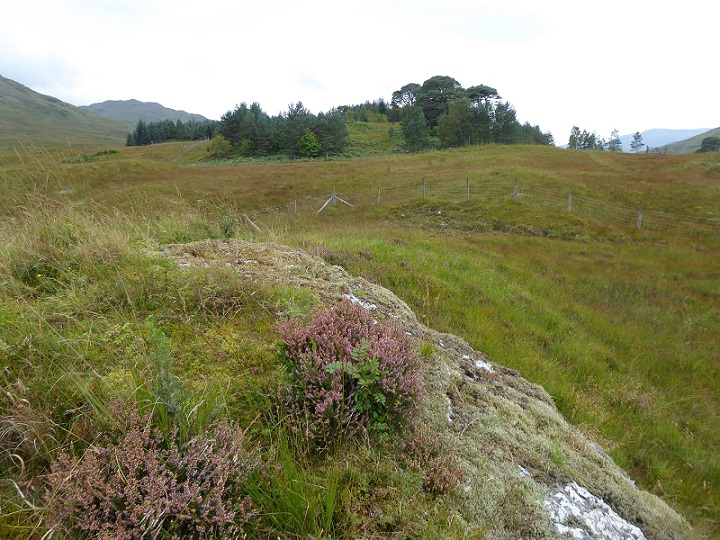
To me this photos helps encapsulate the planning failure and the pinewood management failure. The gap between the two enclosures was an opportunity missed by the Loch Lomond and Trosschs National Park Authority.
Moreover, that a stock fence rather than deer fence has been sufficient to enable trees to regenerate naturally suggests that it may now be grazing by sheep which presents the main challenge to the recovery of the pinewood. If so, why not then remove sheep from the entire SSSI? But why not also remove the deer fences to allow some grazing within the “core” of the pinewood. The deer of course would have to be very carefully controlled, as at Glen Feshie or the northern part of Mar Lodge, but some trampling and browsing would help create spaces in the vegetation for trees to re-seed.
This idea was actually proposed for Glen Falloch back in 2008, as part of the work done to develop an Integrated Land Management Plan for the Estate. That plan was kept secret by the LLTNPA until they were forced to release it in 2009 after I appealed to the Information Commissioner Decision018-2019. Unlike other FOIs, the LLTNPA have never published the documents on their website. They clearly have something to hide from the public as is evidenced by two paragraphs from the Woodland Overview which are very relevant to this discussion:
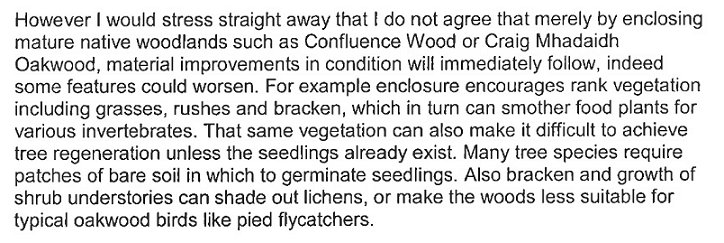

An excellent article in SCOTTISH FORESTRY Volume 75 No. 2 Summer 2021 by Ron Summers and Stephen Cavers, which sums up existing policy on native pinewood regeneration, also helps to illustrate the failures at Glen Falloch:
“The Management of Semi-natural Woodlands. Native pinewoods (FC, 2003) is the key document that explains the rationale for the management and expansion of Caledonian pinewoods. The guidelines for expansion recommend that ‘natural regeneration is strongly preferred’ and that ‘planting should be the last resort’. The document recognises two zones for expansion around the ‘core’ areas of Caledonian pinewood: a ‘regeneration zone’ of 100m, and a ‘buffer zone’ of 500m extending beyond the regeneration zone. Planting is permitted in the buffer zone, provided the seedlings are grown from locally-acquired seed. The document recommends that there should be no ground preparation. One of the recommendations for the core Caledonian pinewoods, as envisaged by the BAP (Anonymous, 1995), was to remove the non-native conifers within Caledonian pinewoods.”
Note the date of the FC guidance, 2003, well before SNH last reviewed the Site Management Statement for Glen Falloch and the hydro planning application in 2008. All the guidance about regeneration zones, buffer zones and planting appears to have been totally ignored by the two bodies responsible for the Glen Falloch Pinewood, NatureScot and the LLTNPA. Nature has actually gone backwards under their watch. Recent claims by both these bodies that they now want to put nature first should be regarded as yet more green washing until they admit how they have failed nature in places like Glen Falloch in the recent past and start to take action to rectify the problems.
As I have argued in previous posts about Coille Choire Cuilc (see here), just over the hill from Glen Falloch, and the failure of the LLTNPA’s woodland strategy to address the question of how restore the Caledonian Forest in the National Park (see here), the current remnants are far too small and only support a very restricted range of pinewood species. The challenge to NatureScot and the LLTNPA therefore is to take the necessary action to enable these pinewood fragments to expand and link up. That could take 50 years but an open debate with the public and ecological experts on the need to do this and the ways to do so should start now. We are in a nature emergency after all.
Note
The quote in the title is from the description of Glen Falloch pinewood given in “Our Pinewood Heritage” 1994. SNH has staff then who were allowed to speak openly and speak the truth!